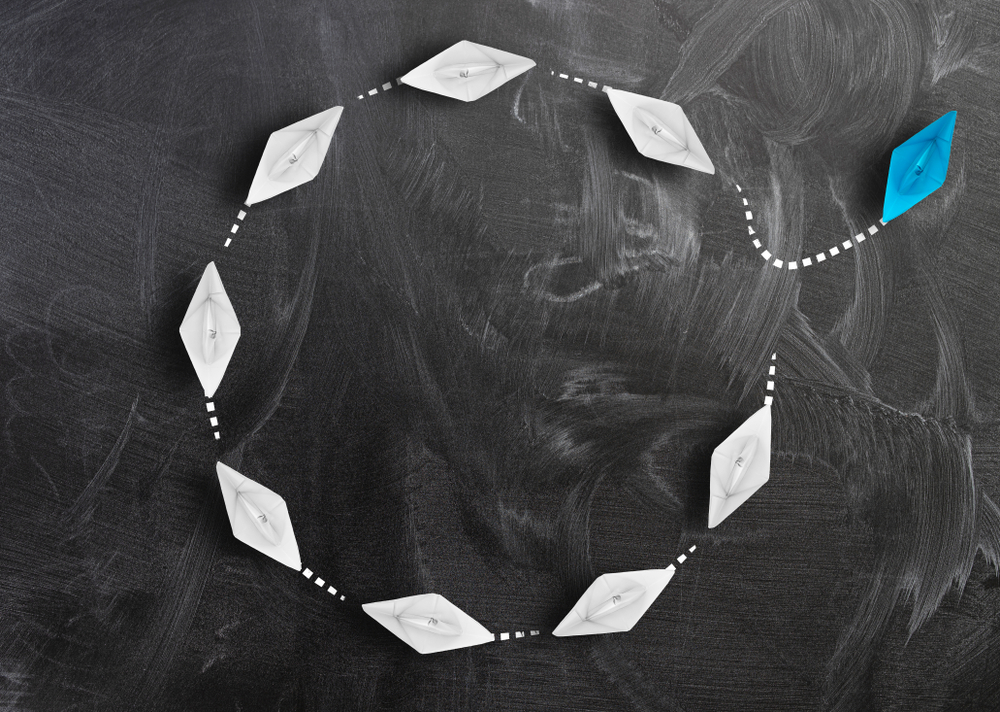Taking on different roles is an integral part of human nature. We do it in every aspect of our lives, whether it be professional or personal. Relationships are no exception to this “rule” either, as individuals forming a deeper connection will naturally put on different faces, typically based on their strengths and mental capabilities.
Some of us are Adventurers, bringing spontaneity, excitement, and a healthy dose of chaos to our relationships. Others may be Planners, taking charge of organizing and structuring various activities and responsibilities.
Some are Problem Solvers, prioritizing staying down-to-earth, finding constructive and mutually beneficial solutions to everyday problems. Nurturers, on the other hand, will excel in taking care of both parties’ emotional well-being by creating a soothing and loving atmosphere.
Regardless of the role(s) we take, the part we play serves the ultimate purpose of bringing balance to the force of our connection, both by compensating for our partners’ shortcomings and promoting their strengths.
However, what happens when the balance is broken and the scales tip heavily to the side? When one person keeps allowing their counterpart to take no responsibility for their actions, thereby perpetuating detrimental and, even, destructive behaviors?
This is the very definition of enabling – a harmful and toxic dynamic that stifles personal growth, fosters dependency, and hinders virtually any possibility of progress, both for the individuals involved and the relationship as a whole. Fortunately, this vicious cycle can be broken and, today, we’ll explore just what it takes to do so.

What Is The Psychology Behind Enabling?
Understanding the nature and nuances of an enabler personality is a crucial step to learning how to stop enabling. Doing so requires us to go back to basics in order to grasp the psychological foundation of this behavior.
By definition, enabling stems from a combination of empathy, compassion, and a genuine desire to help someone we care about. Now, these are by no means negative traits. In fact, they are desirable and necessary for every relationship to thrive.
The problem, however, arises when said traits are brought to the one-sided extreme, which typically happens when they become fuelled by the following underlying factors:
- Fear of rejection or abandonment;
- Low self-esteem;
- Conflict-avoidant patterns;
- Sense of self-worth dependent on external validation;
- Guilt or anxiety (typically related to taking care of one’s own needs);
- Exaggerated caregiving/people-pleasing mindset.
Connecting The Dots
Taking the aforementioned factors into account, we can draw a clear parallel between enabling and another harmful relationship dynamic: codependency. These two behavior patterns are intricately linked and often go hand-in-hand, due to both of them revolving around an excessive reliance on another person’s needs and well-being to the detriment of one’s own.
Aside from the enmeshment, both dynamics are also characterized by a tendency to:
- Avoid conflict at any and all costs;
- Shield the other person from consequences;
- Justify, minimize, or outright deny the existence of issues.
However, what this does is perpetuate destructive patterns of behavior, thereby preventing both parties from experiencing personal growth and self-sufficiency, even to the point of complete stagnation and, in most extreme cases, regression in the field of personal development.
As such, “reprogramming” enabling personality traits in order to break this vicious cycle often requires addressing codependent traits simultaneously. Doing so typically requires a lot of effort and introspection, yet it is far from impossible.
What Is The Cycle Of Enabling?
We mentioned the “cycle of enabling” several times already. Now that we understand the root and causes behind the issue, we can explain what it actually refers to:
- The Cycle of Enabling is a repetitive pattern of behavior in which an individual (enabler) consistently shields or rescues another person (enabled) from the consequences of their own destructive actions, perpetuating unhealthy dependency within a relationship.
The Cycle of Enabling: Stages
The Cycle typically consists of several key stages:
- Denial: The first stage is characterized by the enabler downplaying or ignoring the existence of the problem. This can mean rationalizing or making excuses for the actions of their counterpart to avoid acknowledging the problem.
- Minimization: The enabler downplays the consequences of the loved one’s actions. They might genuinely believe that the situation is not as bad as it appears or that it will improve on its own.
- Rationalization: At this point, enablers may begin to justify the behavior of their partner. However, in doing so, they’re also effectively convincing themselves that they are helping, that their support is essential, or that they are the only ones who understand what’s happening in their partner’s world.
- Rescuing: As the situation deteriorates, the enabler usually performs a desperate attempt to solve the problem and/or shield their loved one from the consequences of their own actions, which typically leads to deepening the (co)dependency.
- Repetition: The cycle starts anew.
We can conclude that each cycle has a tendency to become more severe than the previous one. Due to the fact that the situation already escalated in one of the previous phases (typically Stage 4), the enabler may become more deeply entrenched in their role with each passing iteration.
How Do You Break The Cycle Of Enabling?
With the knowledge of how The Cycle works, as well as a deeper understanding of the factors that influence the formation of the enabler personality, we can extrapolate the ways to stop enabling in relationships:
- Recognize your role as an enabler: Reflecting on your own fears, insecurities, and motivations will help you understand why you enable. This may seem like a small step, but it is a giant leap toward change.
- Set boundaries: Determine your limits and what you will and will not tolerate in a relationship. Clearly communicate these expectations to your partner and, most importantly, stand firm in upholding them, even if you encounter resistance.
- Encourage accountability: Instead of making excuses, justifying the behavior, or swooping in to rescue your loved one, encourage them to take responsibility for their actions.
- Enforce accountability: Let the person you’re enabling face the consequences. Difficult as this may be to do, it can just be the wake-up call and a catalyst for a change.
- Seek professional help: If your situation is particularly complex or volatile, it is best to seek professional help. Coaching, therapy, and counseling can help you break the cycle of enabling and lead your partner down the road of changing their destructive habits.

Understand How To Stop Being An Enabler With PIVOT’s Help
You don’t have to remain trapped in the cycle of enabling, desperately seeking a way out. The solution is readily available and all you have to do to seize it is reach out to PIVOT.
We specialize in coaching individuals, couples, and groups to stop enabling behaviors, rediscover the power of healthy relationships, and foster more meaningful connections. Our experienced team of compassionate professionals will walk with you every step of the way, providing the guidance and support necessary for you to heal.
All workshops and sessions take place in the tranquil setting of our Glass House Retreat, where you can find solace and strength while undertaking a journey of self-discovery and growth away from the distractions of everyday life.
Don’t let an enabler personality dictate your life any longer. Join us today and rediscover the joy of healthy, nurturing, and fulfilling relationships that you know you deserve!